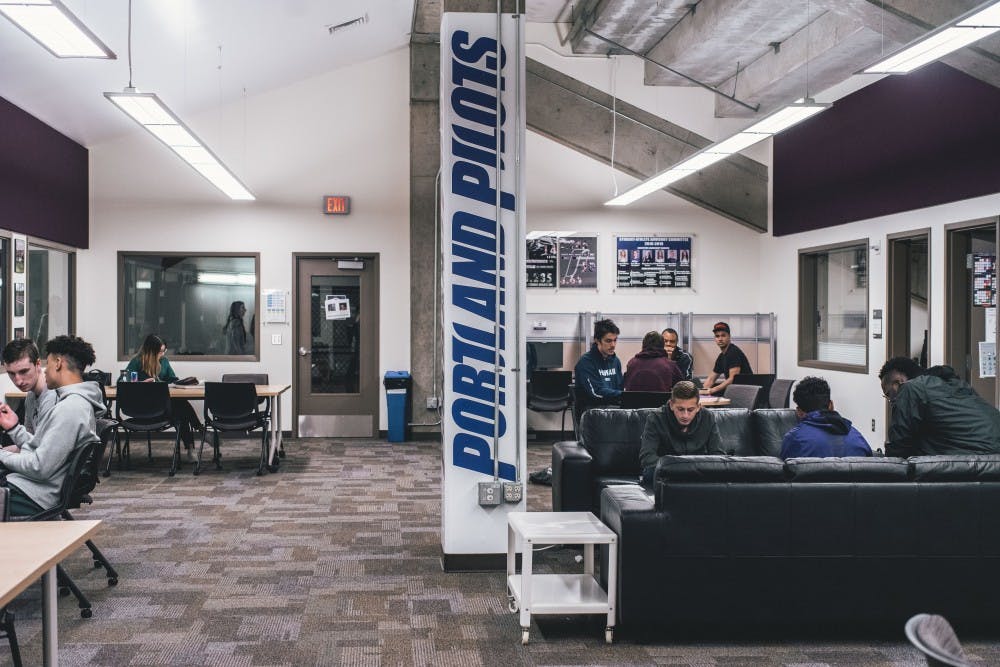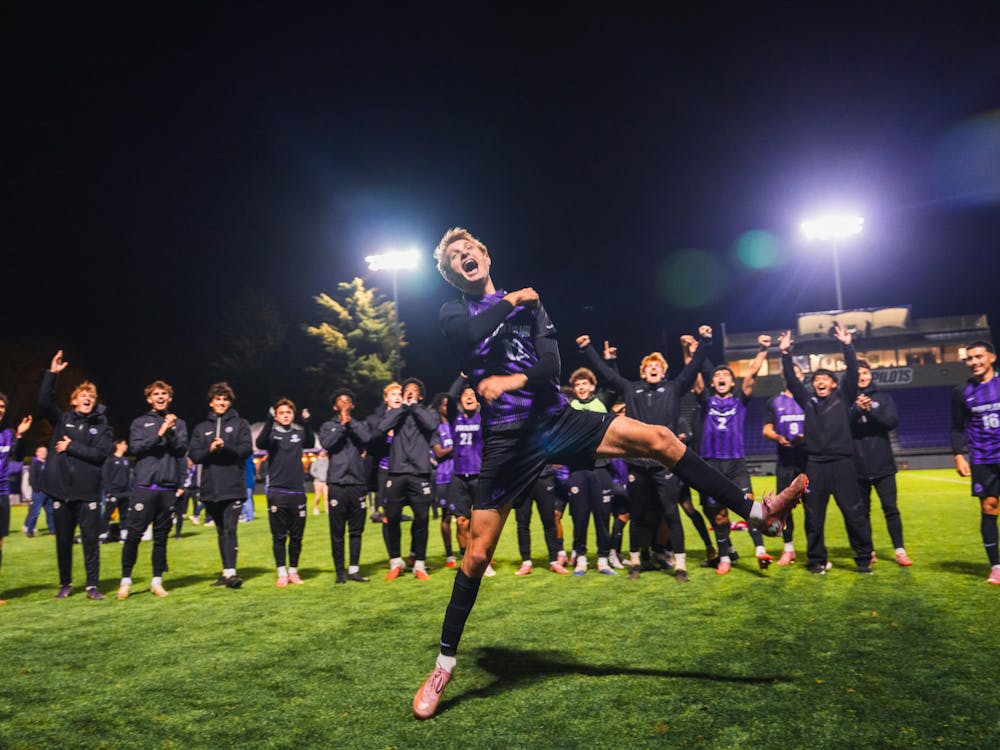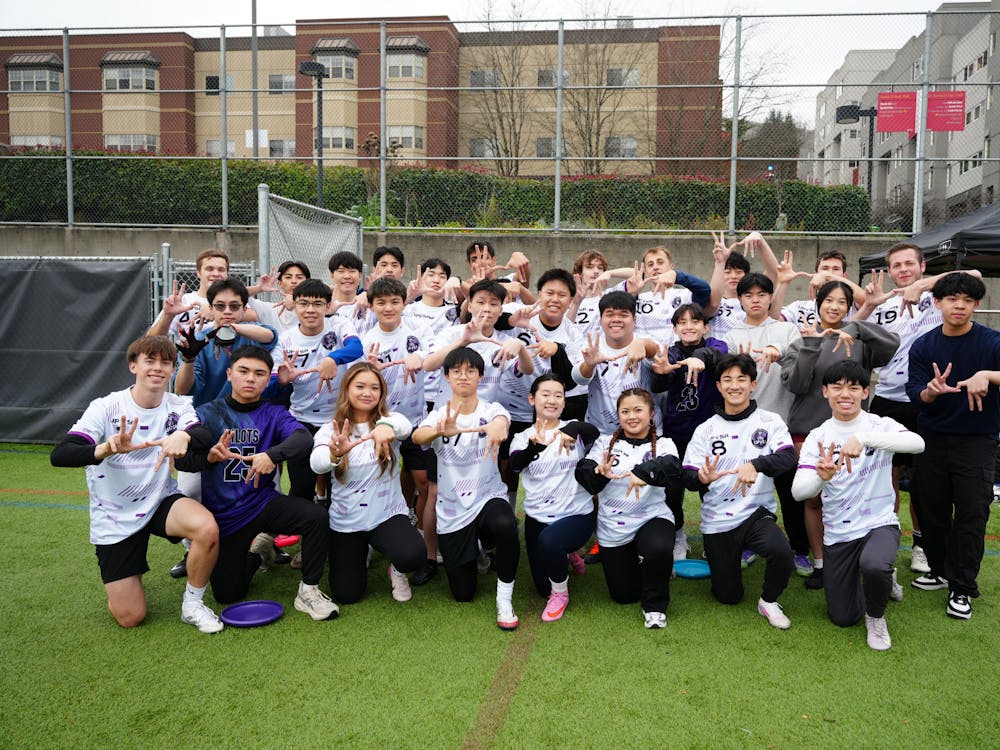For some, being a student-athlete means waking up at 5 a.m. every day of the week to get dressed and meet with the rest of the team before the bus leaves. For others, it means having three back-to-back classes starting at 8:10 a.m., then heading straight to a three-hour practice. For all student-athletes, however, pursuing a major of interest while competing at the highest level means less free time, a lot of planning ahead, and a lot of pressure do well both in the classroom and on the playing field.
Yet despite this pressure, University of Portland student-athletes have garnered all kinds of academic recognition, including All-Academic honors for students on the women’s soccer, women’s basketball and volleyball teams, and USTFCCCA All-Academic for men’s and women’s cross country. Overall, UP’s student athletes have a 97 percent graduation rate — higher than the national rate for D1 student athletes, which is 88 percent. This success comes from a variety of majors ranging from political science to mechanical engineering to nursing.
Some sports teams excel beyond others at UP and across the country, like women’s track and field which tied for the ninth highest average GPA for a D1 team in the nation and second highest in the West Coast Conference.
While these student-athletes have earned their success through hard work and dedication, they haven’t done it alone. UP may not have seen as much academic accomplishment among its student-athletes if it weren’t for three crucial women: Assistant Athletic Director for Academic and Student-Athlete Development Glenna Andrews, Assistant Director of Academic and Student-Athlete Development Ellen Macomson and Learning Skills Specialist Lauren Blumhardt.

These women, with the direction of Senior Associate Athletic Director Karen Peters, have expanded academic services for student-athletes at UP to ensure their success both on the playing field and in the classroom, with Peters spearheading the expansion.
Peters, who has worked at UP for 13 years after working at Stanford in a similar position, has overseen the growth of academic development since it was a single-person operation, run by Dan McGinty, who was the sole academic advisor for student-athletes but is now director of the Dundon-Berchtold institute.
About seven years ago, along with the hiring of Vice President for Athletics Scott Leykam, Peters started to expand the program each year by hiring full time employees, adding compliance and student services and creating a designated space for student-athletes.
Part of that growth necessitated the Pilot Athlete Resource Center (PARC), a study area built in 2017 specifically for student-athletes. The space has become a go-to for athletes looking for help with their classes, registration or any other academic assistance.
“I think what we’ve seen is that the lives of student-athletes are more complex and more demanding than they’ve ever been,” Peters said. “That means that the kind of things that we provide have just grown in scope.”
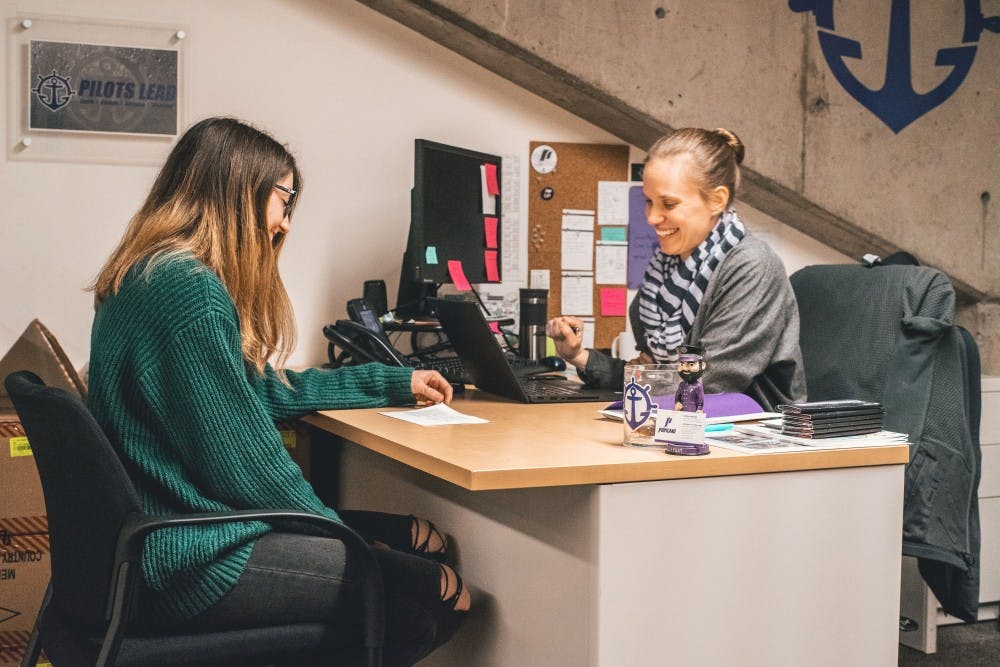
It’s all about making sure that students are getting connected to the resources already available on campus to ensure their success. The academic resource team within athletics provides some additional support to students by working with professors to set an alternate time for an exam the student might miss for an away game or hiring tutors to work with athletes individually.
“We just really help them meet their academic goals,” Andrews said. “To just ensure that they’re able to be the student they want to be.”
Peters works with coaches to make sure that practices don’t interfere with classes so that every athlete has the chance to pursuit the major of their interest and choice. She is currently working with coaches to prepare for fall practice schedules, working around the classes that the student-athletes are currently registered for and being cognisant of incoming freshmen.
“The most important thing we do is spending time on our students’ support, and making sure we have the right support and resources for our kids,” Peters said.
But even with the work that Peters does to make sure that practice doesn’t overlap with academics, student-athletes still have hectic schedules throughout the week. This is why Andrews and her team reach out to athletes the first time they get to campus to make them aware of the available resources. They meet one-on-one with new students to go over a series of questions to get to know the newcomer better and start building that communicative relationship.
“Really working with them to set those goals,” Andrews said of these first meetings. “Figuring out, great, that’s your goal? How do we get there?”
Every coaching staff has some designated as an academic resource — a point person to go to if an athlete is looking for additional academic assistance. Not only do coaches want their athletes to do well in games, but they also want them to thrive academically. Most of them being former student athletes themselves, they understand the kind of pressure their players are under. Coaches are yet another layer of academic support.
Head volleyball coach Jeff Baxter meets with his players weekly to talk about their individual skills, but he makes sure to check in on how they’re doing academically before anything else.
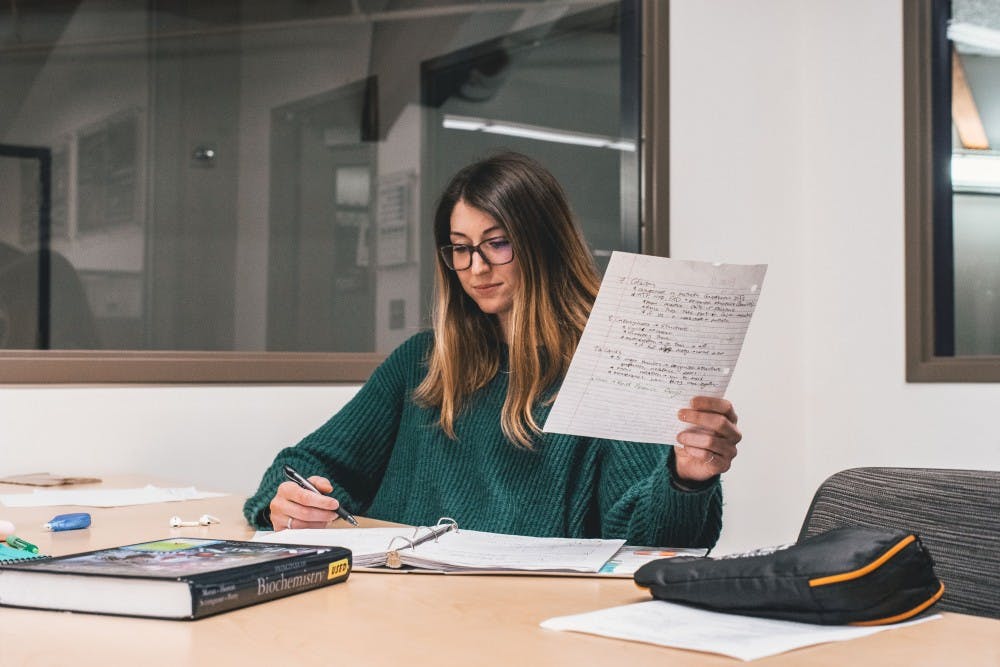
Senior beach volleyball player Morgan Robinson does bio-chem homework in the PARC.
“The first thing we talk about every session is school,” Baxter said. “And we’ll get into details about classes and study techniques and things they’re doing to make sure they’re successful in the classroom.”
Students also support each other as they simultaneously pursue their athletic and academic goals. The Student-Athlete Academic Committee (SAAC) is another resources team for student athletes; except this committee is made up of students themselves. SAAC members are also looking to keep student athletes engaged in activities that they might not typically get to participate in due to their busy schedules, like volunteer service opportunities and bonding with students on other sports teams.
“At the end of the day we’re all kind of on the same team,” SAAC President Lauren LaRocco said.
LaRocco, a redshirt senior getting her masters in biomedical engineering after finishing a bachelor’s in mechanical engineering, exemplifies the success one can have while pursuing a rigorous major while also competing in a D1 sport.To anyone who would say that athletics doesn’t prioritize academics, LaRocco would simply refer to her team’s average GPA, which was a 3.60 in 2018.
LaRocco, her teammates, other student-athletes, coaches and PARC staff all work together to deconstruct the stereotype that student-athletes don’t do well in their studies, debunking it with their awards, their honors and their consistently impressive GPAs.
“They’re succeeding at extraordinary levels on campus and in the classroom,” Andrews said. “So, something that we tell our students as much as possible is ‘You aren’t that stereotype. People may see you and think that stereotype, but prove them wrong. Because you can.’”
Ana Clyde is a senior sports reporter and copy editor for The Beacon. She can be reached at clyde20@up.edu.



